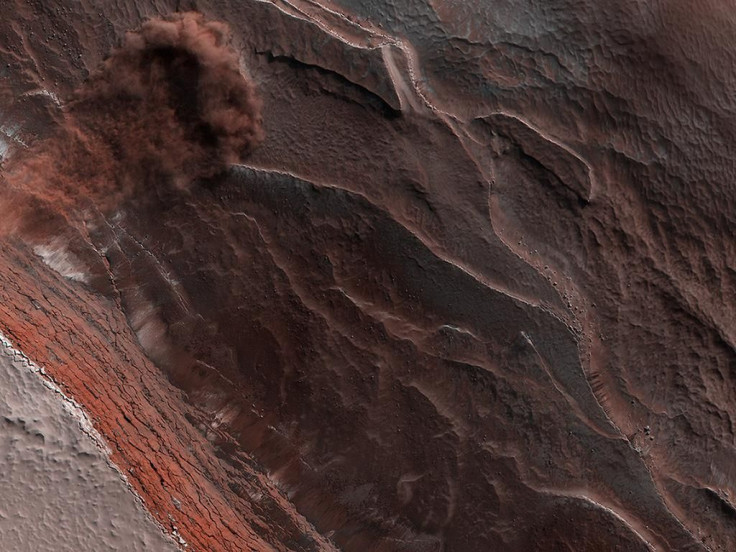NASA Mars Photos Show Avalanches, Impact Craters And Dust Devils On Red Planet

KEY POINTS
- NASA celebrated the 15th anniversary of the MRO's launch
- The MRO studies Mars from its orbit
- NASA shared images of various geological features on Mars
NASA recently shared various stunning photos that showcase Mars’ different surface features. The agency unveiled the photos as part of its celebrations for the launch anniversary of its Mars Reconnaissance Orbiter (MRO).
The MRO is a robotic spacecraft that was designed to study the climate and geological features of Mars from its orbit. It was officially launched on Aug. 12, 2005, and reached Mars on March 10 in the following year. Since then, it has been observing the red planet and taking beautiful photos from space.
Last week, NASA celebrated the 15th anniversary of the MRO’s launch. To commemorate the space probe’s achievements, the agency released some of the stunning photos captured by the MRO during the course of its mission. The images were captured using the High Resolution Imaging Experiment camera mounted on the MRO.
One of the photos features an avalanche as it unfolded on the side of a hill on Mars. According to NASA, avalanches on the red planet often occur as the ice layers on hills and mountainsides begin to melt due to changes in the season.
“As seasonal ice vaporized in the spring, these 1,640-foot-tall (500-meter-tall) cliffs at Mars' north pole began to crumble,” NASA explained. “Such cliffs reveal the deep time scales on the planet, exposing the many layers of ice and dust that have settled during different eras.”

Another photo shows a massive crater on the surface of Mars. NASA noted that since Mars’ thin atmosphere is only about 1% as dense as that of Earth’s, it does not have an effective barrier to protect its surface from objects falling from space.
As a result, large meteors and asteroids can easily go through the red planet’s atmosphere and cause impact events on the ground. The photo shared by NASA features an impact crater that has a diameter of about 100 feet. The discoloration surrounding the crater indicates the blast zone created by the space rock after it crashed on the surface.

Another geological feature spotted by the MRO on Mars is a dust devil. A photo taken by the probe on Feb. 16, 2012, features a towering dust devil twirling around on the surface of Mars. Based on the image, NASA estimated that the dust devil in the photo measures about 2,620 feet tall.
© Copyright IBTimes 2025. All rights reserved.





















